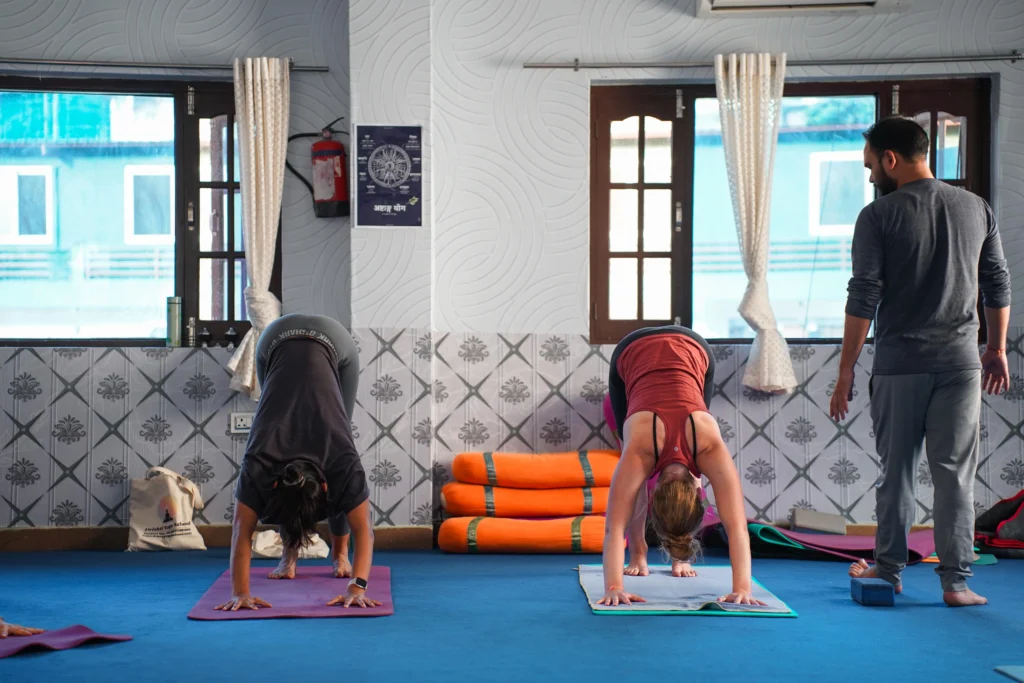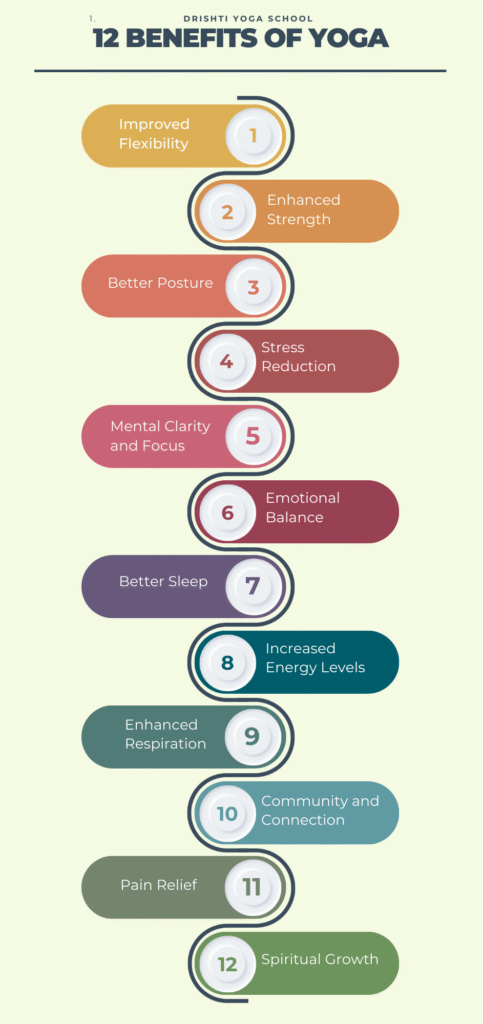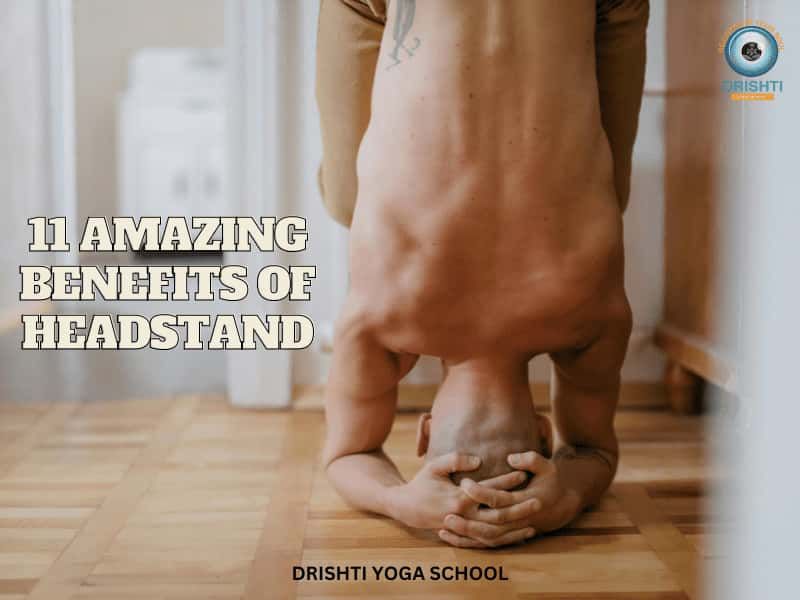
Not merely a physical workout, yoga is a comprehensive practice that brings together the mind, body, and spirit. It has its roots in ancient India and has become immensely popular around the world for its myriad benefits. In this blog post, we will look at 12 powerful reasons to add yoga to your daily life style.
Here is the list of 12 Benefits of Yoga

1. Improved Flexibility
One of the most immediate benefits of practicing yoga is that it makes you more flexible. Most people find that after only a handful of sessions, they can stretch farther and hold poses more securely. This newfound flexibility certainly helps in getting the full benefit of the asanas and can also serve to prevent injuries and reduce muscle tension.
2. Enhanced Strength
Yoga is a fantastic method for developing power and force. Lots of the stances ask you to hold your body’s weight in different manners, which helps not only to bolster strength but to also boost endurance. With sufficient time and effort, this newfound strength can morph into something greater, like improved posture or a decreased chance at incurring an injury.
3. Better Posture
With the emphasis on alignment and balance in yoga, practitioners often find that their posture improves. Good posture is crucial for preventing back pain and other musculoskeletal issues. By becoming more aware of your body and how it moves, you can develop habits that promote better posture both on and off the mat.
4. Stress Reduction
Yoga is very famous for being able to do one thing: reduce stress. From the practice, we may well imagine that yoga is about relaxation and being mindful—and in some sense, it is. But the medium of yoga and the good it does for the mind and body is much wider in scope. With regards to yoga and stress relief, consider this: Mindful breathing, a la yoga, is almost the same thing as the deep breathing that a Zen monk does.
5. Mental Clarity and Focus
Practicing yoga on a regular basis can boost cognitive and mental functions. The reason for this is because the meditative components of the yoga asanas help to make the mind still and quiet, which allows for a better kind of focus when doing something like esoteric math or writing an essay. I sometimes wish we could mandate a 30-minute-a-day minimum requirement for all students and teachers.
6. Emotional Balance
Practicing yoga leads to self-awareness and emotional regulation. When you connect with your breath and body, you can observe your thoughts and emotions without judgment. This can be a first step toward greater emotional resilience and managing anxiety and depression. This is what I took from the week-long class – a path to resilience. Somehow, I kept failing and couldn’t keep up with the class. I momentarily stopped being part of the class this week. I stopped (practicing yoga and) being on the path to resilience.
7. Better Sleep
Numerous individuals have problems with sleep, yet yoga may provide a solution. The relaxation methods we learn in yoga can help us achieve a better sleep quality and attain a swifter descent into slumber. If we gently practice yoga or a form of meditation before bed, our bodies are signaled that it’s time to wind down and that transition into sleep should happen with greater ease.
8. Increased Energy Levels
You might not think so, but yoga can be energizing. When you combine the physical movements with the deep breathing and the mindfulness that goes along with yoga, it’s quite an invigorating practice. Most of the time after I do yoga, I feel more energized and definitely more awake than if I’d just had a cup of coffee. It’s not a substitute for caffeine, but it can be a very effective non-caffeine pick-me-up.
9. Enhanced Respiratory Function
The practices of yoga often emphasize the importance of breathing. When practicing yoga, one can use various techniques to aid in the breathing process. 1. Breath control (or pranayama) is a fundamental aspect of yoga. 2. Through diverse breathing techniques, yoga can serve to improve lung capacity and respiratory function. 3. This might especially benefit individuals with certain respiratory issues, like asthma or chronic obstructive pulmonary disease (COPD).
10. Community and Connection
Participation in a yoga class can cultivate community and connection among attendees. Countless yogis have stated that the shared experience of practicing yoga ties them closer to their fellow practitioners, creating bonds and friendships that extend off the mat. This sense of community can enhance emotional well-being and lend practitioners the support they may need to get through tough times.
11. Pain Relief
It has been shown that yoga works well for several kinds of pain, and that includes chronic back pain, arthritis, and migraines. The gentle stretching and strengthening of muscles both near and far from the site of the pain can be quite effective—even more so if you consider that a good number of muscle pain instances occur when tense muscles don’t move enough, or when they try to move too much or too fast.
12. Spiritual Growth
For a large number of people around the world, yoga serves as much as a spiritual journey as it does a physical one. It promotes self-reflection and individual growth, enabling people to access their inner selves in a way that’s as private and intimate as anything I can think of. This journey can, and often does, lead to a much greater understanding not just of oneself but also of the kind of raw, unvarnished connection we have to the world around us.
Conclusion
Embedding yoga into your everyday life can provide a multitude of rewards that go way beyond the mat. From physical health to a multitude of mental and emotional benefits, the upsides of yoga are numerous and varied. And whether you consider yourself a true yogi or are just starting out, this ancient practice can offer something for everyone.

